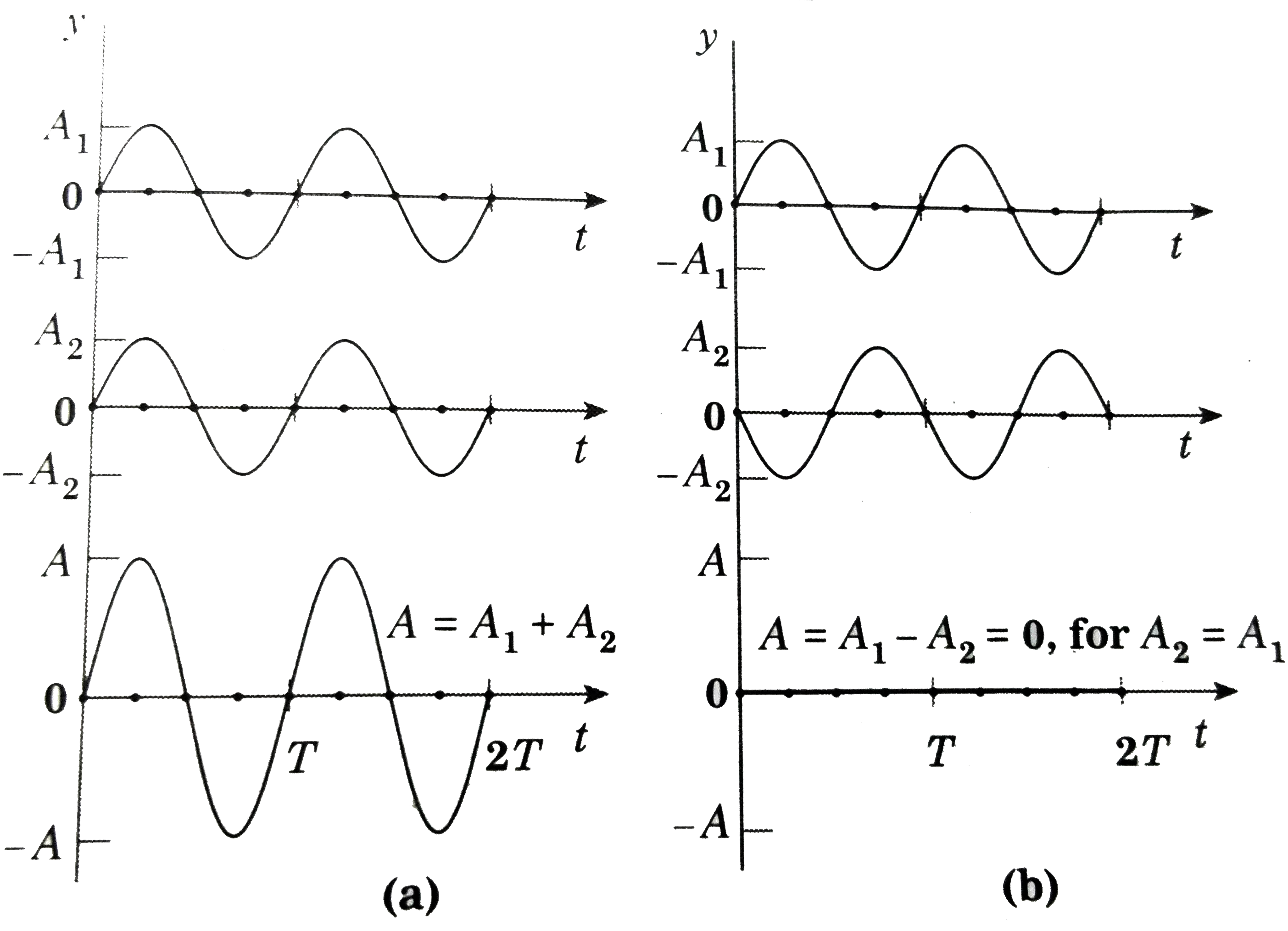State the principle of superposition of waves.
Video Solution
Text Solution
Principle of superposition of waves: The displacement of a particle at a given point in space and time due to the simultaneou influence of two or more waves is the vector sum of the displacements due to each wave acting independently.
Explanation:
Consider two sound waves of the same frequency arrivie simultaneousiy at a point.
(1) If the are in phase, the compression due to one wave coincides with the compreasion due to the other and the rarefaction due to one wave coincides with the rarefaction due to the other. Therefore, the resultant amplitude and hence the resultant intensity at that point becomes minimum. This phenomenon is called constructive interference [fig. (a)]
(2) If they are opposite in phase, the compression due to one wave coincides with the rarefaction due to the other and vice versa. Therefore, the resultant amplitude and hence the resultant intensity at that point becomes minimum. This phenomenon is called destructive interference. If the two waves have the same amplitude, the resultant amplitude and hence the resultant intensity at that point is zero

(3) If the phase difference between the two interfering waves is different from 0and180∘, the resultant amplitude lies between A1+A2and|A1−A2| and hence the resultant intensity at that point is neither maximum, nor zero.
|
Topper's Solved these Questions
- EXPLANATION, CHARACTERISTICS AND PROPERTIES Book:NAVNEET PUBLICATION - MAHARASHTRA BOARDChapter:EXPLANATION, CHARACTERISTICS AND PROPERTIES Exercise:Stationary Waves
Explore 5 Videos
- EXPLANATION, CHARACTERISTICS AND PROPERTIES Book:NAVNEET PUBLICATION - MAHARASHTRA BOARDChapter:EXPLANATION, CHARACTERISTICS AND PROPERTIES Exercise:Kinetic Theory of Gases and Radiation
Explore 4 Videos
- EXPLANATION, CHARACTERISTICS AND PROPERTIES Book:NAVNEET PUBLICATION - MAHARASHTRA BOARDChapter:EXPLANATION, CHARACTERISTICS AND PROPERTIES Exercise:Surface Tension
Explore 4 Videos
- EXPERIMENTS AND DIAGRAMSBook:NAVNEET PUBLICATION - MAHARASHTRA BOARDChapter:EXPERIMENTS AND DIAGRAMSExercise:ATOMS, MOLECULES AND NUCLEI
Explore 1 Video
- INSTRUMENTS : CONSTRUCTION AND WORKING Book:NAVNEET PUBLICATION - MAHARASHTRA BOARDChapter:INSTRUMENTS : CONSTRUCTION AND WORKING Exercise:Semiconductors
Explore 6 Videos
Similar Questions
Knowledge Check
The energy in the superposition of waves
Ais lostBincreasesCremains same, only redistribution occurs.Dmay increase or decrease depending upon the medium.Assertion : The principle of superposition is not valid for gravitational force.
Reason : Gravitational force is a conservative force.AIf both assertion and reason are true and the reason is the correct explanation of the assertion.BIf both assertion and reason are true but reason is not the correct explanation of the assertion.CIf assertion is true but reason is false.DIf assertion is false but reason is true.
State the principle of superposition of waves.
View SolutionState the principle of superposition of waves.
View SolutionState the principles of production of EM waves. An EM wave of wavelength λ goes from vacuum to a medium of refractive index n. What will be the frequency of wave in the medium?
View SolutionState the principle of moments.
View SolutionAs you have learnt in the text, the principle of linear superposition of wave displacement is basic to understanding intensity distributions in diffraction and interference patterns. What is the justification of this principle ?
View SolutionPrinciple Of Superposition Of Gravitation
View Solution

